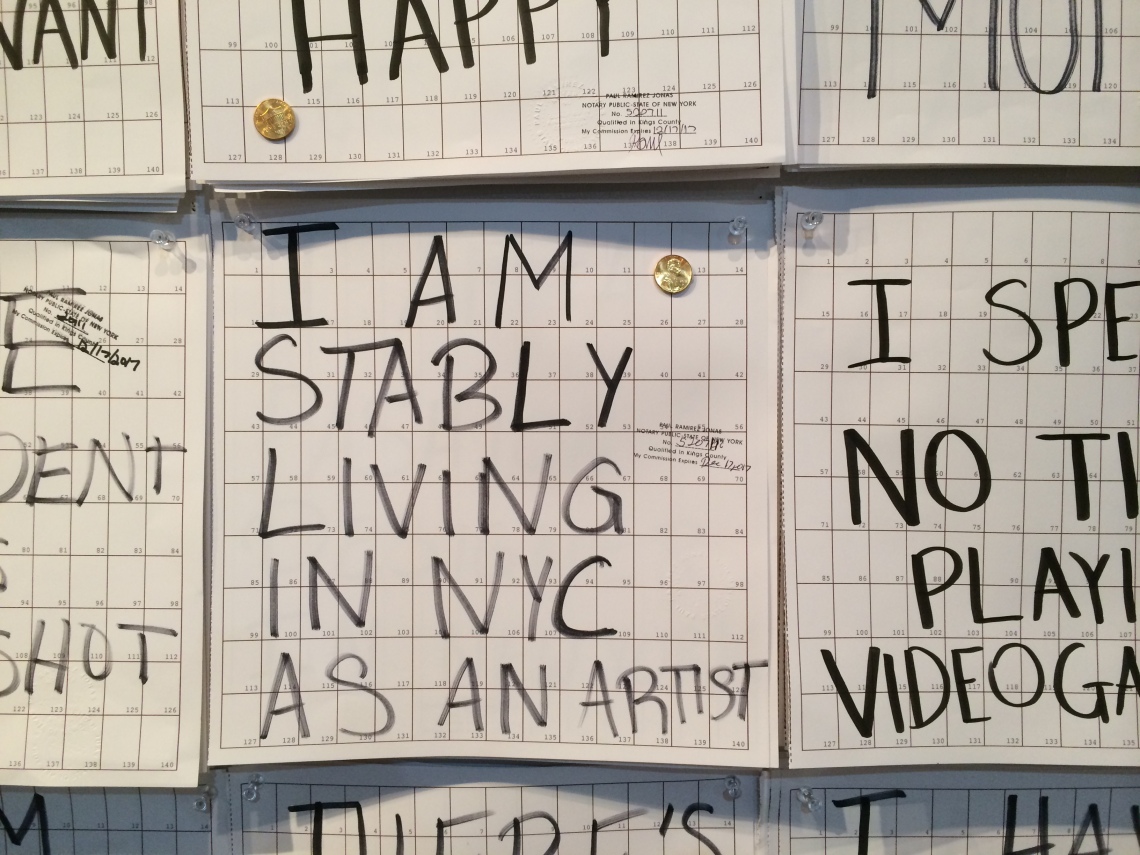 An “alternative fact” offered by a visitor. From “Alternative Facts,” a participatory work staged by Paul Ramírez Jonas in 2017 at the New Museum in NYC.
An “alternative fact” offered by a visitor. From “Alternative Facts,” a participatory work staged by Paul Ramírez Jonas in 2017 at the New Museum in NYC.
The little piece posted below was originally published on the JHI blog, “What we’re reading: Week of October 9th.”
A while back, I posted a selection of links on the JHI blog that revolved around the question of creative practice, and the binary of “amateur” vs. “professional” that structures our perceptions of what it means to make art and be an artist. Now that we’re officially in the heart of award season, it seems an opportune moment to continue thinking about the institutions and structures that scaffold these practices.
First, a pair of essays by Alexis Clements (in the LARB), truthful and brutal: “What are the Chances? Success in the Arts in the 21st Century” (2016) and “The Secret Recipe for Success in the Arts” (2017).
Next, Viet Thanh Nguyen on the writer’s workshop (NY Times). Nguyen’s piece reminds me of the collection edited by Chad Harbach (of n+1), MFA vs. NYC. The collection generated a lot of commentary. Loren Glass’s review, “The Creative Precariat,” is another critical perspective on the role of the MFA in adjudicating between those who get to be writers, and those who remain outside of this charmed circle. In his 2016 Artnews essay, Daniel S. Palmer looked at the economic forces and structures driving “the hyper-professionalization of the emerging artist.”
There is pushback against this world, against this particular vision of what it means to be a professional artist/writer/”cultural producer.” Some champion the concept of the amateur (e.g. Miya Tokumitsu, in Frieze, “Completely Unprofessional”; Andrew Berardini, in Momus, “How to be an Unprofessional Artist”) for why should only certified professionals claim access to art making or creativity? Others, weary from waiting at the gate, have chosen to make their own opportunities. In this 2010 interview with Bomb, Danielle Dutton discusses why she founded Dorothy, A Publishing Project. Nick Kokonas presents a different perspective on publishing in his post on Medium, “Why We are Self-Publishing the Aviary Cookbook–Lessons from the Alinea book.”
And there is also the world of the Instagram poet. Here is a NYT profile of Rupi Kaur, and a New Yorker profile of Reuben Holmes.
I leave you with a quote from one who knew all about the perils and pleasures of trying to make it in the “art world”–Carol Rama: “If I really am so good, then I don’t get why I had to starve for so long.”
As a postscript: I am in the process of assembling an annotated bibliography of books and essays, under the rubric of “How Should An Artist Be?” (Apologies to Sheila Heti for appropriating the title of her novel.) Please send me reading suggestions!